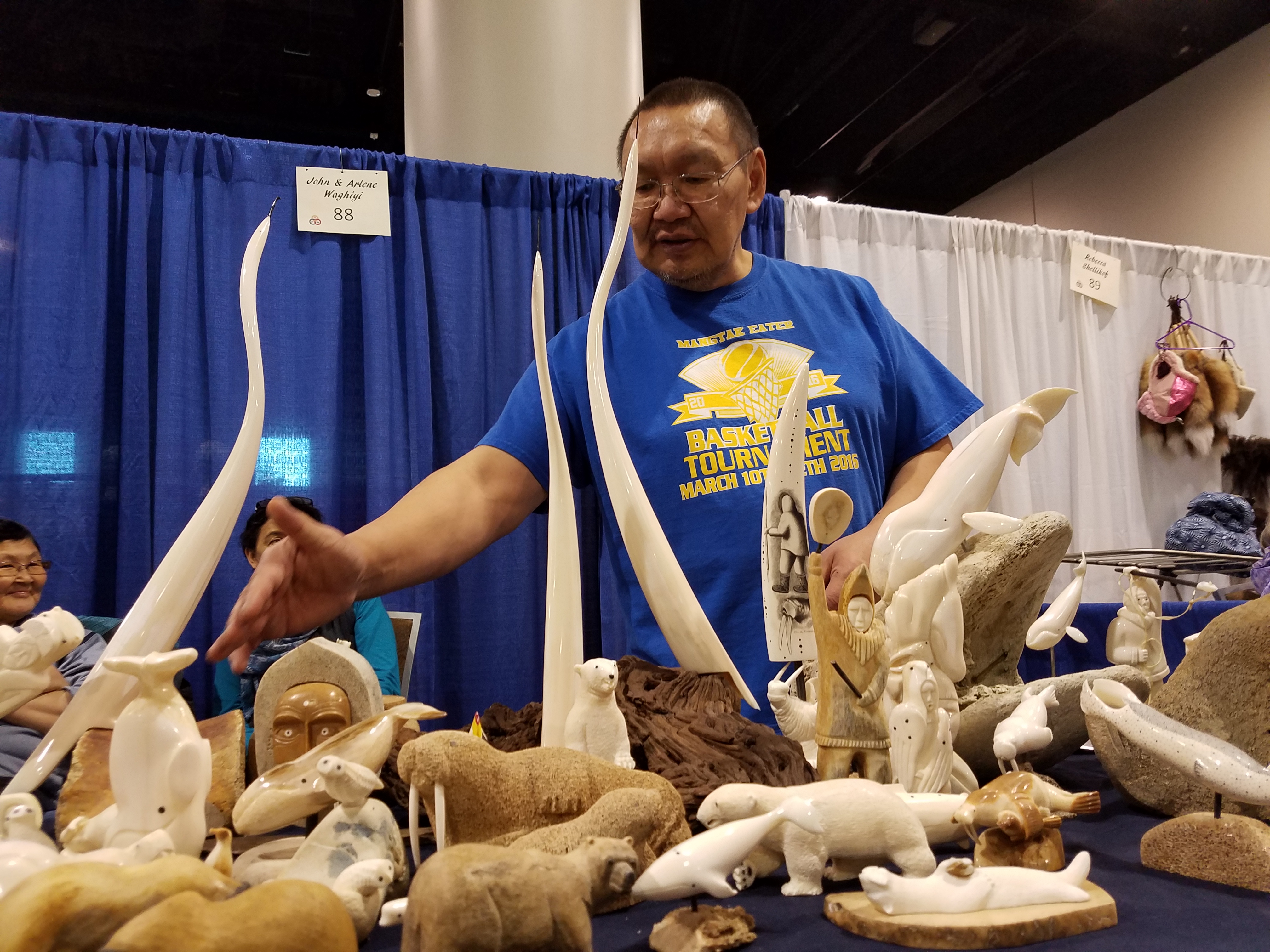A new media campaign highlights difference between walrus and elephant ivory
Walrusivory.org aims to counter the effect that state-level bans in the United States aimed at elephant ivory have had on Alaska Native walrus ivory carvers.

Revulsion over the devastating poaching of elephants in Africa has had an unintended victim, say Alaska Native groups: the legal and economically important trade of walrus ivory artwork created by Indigenous artists.
In response, indigenous groups have worked for years to counter blanket bans passed by several state legislatures — bans that are targeted at protecting vulnerable elephants but have also affected sales of products made from walrus ivory, harming Indigenous artists’ businesses.
Efforts to get lawmakers outside of Alaska to make a clearer distinction between legal and illegal ivory commerce have not been successful. Now Indigenous organizations are appealing directly to the general public with a media campaign and a website: Walrusivory.org.
“WalrusIvory.org aims to inform visitors, lawmakers and others about the ethical, legal and responsible use of walrus ivory by Alaska Native people,” say the website’s home page.
The campaign is coordinated by Kawerak Inc., a Nome-based tribal consortium. The website features video profiles of several Indigenous ivory carvers who explain their work, their family histories and their cultural traditions. It also features informational toolkits that can be downloaded by artists and community and tourism groups.
It was funded in part by a state grant distributed from a program intended to help Alaska tourism recovery from the COVID-19 pandemic. In all, Kawerak got over $941,000 through the grant program, state officials announced last summer.
The campaign’s goal is to educate the non-Alaska public about the distinction between walrus ivory traditions, which are a positive aspect of Indigenous life, and the destructive and illegal elephant ivory trade, said Danielle Slingsby, Kawerak’s outreach director.
Slingsby, who has lived in Alaska for 14 years, said she understands how consumers can become confused.
“Before I moved to Alaska, if you said ‘ivory’ to me I would have never known that there was any other ivory than elephant ivory,” she said.
Under the Marine Mammal Protection Act, Alaska Natives alone are permitted to harvest walruses, a traditional source of food and material for clothing and artwork. Also, according to the Marine Mammal Protection Act, only Alaska Natives may craft raw walrus ivory into pieces of art.
Despite efforts by the U.S. Fish and Wildlife Service to inform consumers about legal sales of traditional Alaska Native art, some states have ivory-trade bans that either sweep all ivory into a single category or make only cryptic mentions of legitimate sales of walrus ivory pieces. California’s ban, for example, does not even mention walrus ivory, while Hawaii’s ban includes an exemption for ivory products allowed by the Marine Mammal Protection Act.
The various state laws have created confusion among would-be consumers of Alaska Native art, with impacts directly felt in the tourism industry of the Nome area, Slingsby said.
In 2019, when cruise ships last stopped in Nome before traffic was interrupted by the pandemic, passengers who shopped local stores were reluctant to buy carved ivory pieces, she said. There was a mixture of worries about legal consequences, moral qualms and other factors inhibiting purchases, she said.
Kawerak and its partners hope to make sure those concerns are assuaged once cruise traffic returns to the Bering Strait region, Slingsby said. As of December, 10 different cruise ships were scheduled to stop in Nome from mid-July to the start of October, according to the Cruise Line Agencies of Alaska.
Alaska’s Congressional delegation has attempted to win passage of federal bills that would prohibit states from banning sales of products crafted by Alaska Natives out of walrus ivory and fossilized ivory. One bill was introduced by Sen. Dan Sullivan in 2017. It was called the “Allowing Alaska to Improve Vital Opportunities in the Rural Economy Act,” or Alaska IVORY Act. It failed to pass.
It was followed by similar bills introduced in 2019 by Sullivan and by Alaska Rep. Don Young. Both languished.